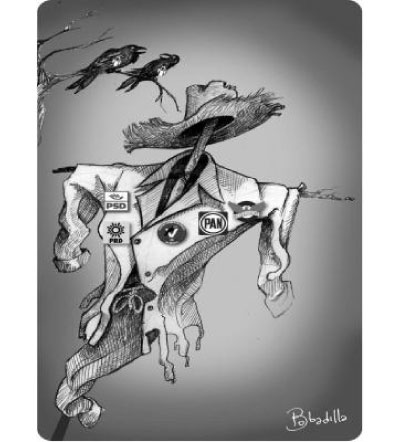Sometimes great documentaries have spectacular launches then fizzle and die, while a select few take off and not only reach a mass audience but deliver on the promise of its power to change. The Mexican documentary Presunto Culpable (“Presumed Guilty”) is flying at a heady altitude. After blazing trails and winning prizes at dozens of film festivals in 2009, being picked up for broadcast by the likes of UK’s Channel 4 and US public television network PBS in 2010, the film – remarkably for a home-grown documentary – secured theatrical distribution in Mexico, the place where it most needs to be seen, opening on February 18th 2011. Then, after two weeks in 200 cinemas nationwide, when it broke the box office record for a documentary with over 300,000 tickets sold (the proceeds of which will be donated to a foundation), a federal judge issued an order blocking further exhibition. It seems like the rotten legal system the film exposes, that presumes suspects guilty until proven innocent, is rearing its ugly head in response to the filmmaker’s barbs.


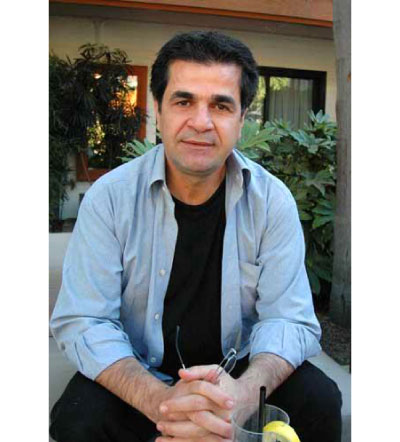
![]() For anyone not living there, it’s hard to know what on earth goes on inside Iran. For some, it’s a cradle of culture; for others, a breeding-ground for extremists. What is certain, however, is that the current Islamic regime doesn’t tolerate dissent, shuttling any and all opposition voices off to jail at will. Now, they have a high-profile convict to deal with: award-winning filmmaker Jafar Panahi. Many of Panahi’s films have been explicitly critical of the Iranian government, like his masterpiece Dayereh (The Circle) from 2000 — winner of the Golden Lion at Venice — which addresses the treatment of women under the Islamist regime. The story is about different women outcast from their families and on the run on the streets of Tehran — not exactly the image that Iran’s highly sensitive leaders want to project of their country. Before his arrest, they had even banned Panahi from travelling abroad, apparently for having worn an item of green clothing — the color of Iran’s opposition, favored by Iranians in exile — at the Montreal Film Festival. Now, an international movement demanding his release is gathering momentum. Dozens of high-profile cineastes like Spielberg, Redford, De Niro, Loach, and Kiarostami (who Panahi used to assist), as well as countless film entities and culture ministers around the world have signed a petition, bringing further international scrutiny to the regime. Panahi may not have intended it this way, but being cast as the martyr has brought massive media attention to the Iran he so desperately wants to change.
For anyone not living there, it’s hard to know what on earth goes on inside Iran. For some, it’s a cradle of culture; for others, a breeding-ground for extremists. What is certain, however, is that the current Islamic regime doesn’t tolerate dissent, shuttling any and all opposition voices off to jail at will. Now, they have a high-profile convict to deal with: award-winning filmmaker Jafar Panahi. Many of Panahi’s films have been explicitly critical of the Iranian government, like his masterpiece Dayereh (The Circle) from 2000 — winner of the Golden Lion at Venice — which addresses the treatment of women under the Islamist regime. The story is about different women outcast from their families and on the run on the streets of Tehran — not exactly the image that Iran’s highly sensitive leaders want to project of their country. Before his arrest, they had even banned Panahi from travelling abroad, apparently for having worn an item of green clothing — the color of Iran’s opposition, favored by Iranians in exile — at the Montreal Film Festival. Now, an international movement demanding his release is gathering momentum. Dozens of high-profile cineastes like Spielberg, Redford, De Niro, Loach, and Kiarostami (who Panahi used to assist), as well as countless film entities and culture ministers around the world have signed a petition, bringing further international scrutiny to the regime. Panahi may not have intended it this way, but being cast as the martyr has brought massive media attention to the Iran he so desperately wants to change.
For more information and ways to help, go to the Free Jafar Pahani facebook page.


![]() Although we’re in the tail-end of the worst financial crisis in years, it doesn’t feel like many lessons have been learnt. Just another global case of plus ca change…? With many people blaming the banks and the financial system in general for bringing the world economy to its knees, dozens of aid organizations have joined forces to kickstart a new campaign in the UK: The Robin Hood Tax.
Although we’re in the tail-end of the worst financial crisis in years, it doesn’t feel like many lessons have been learnt. Just another global case of plus ca change…? With many people blaming the banks and the financial system in general for bringing the world economy to its knees, dozens of aid organizations have joined forces to kickstart a new campaign in the UK: The Robin Hood Tax.
Under the slogan “Turning a crisis for the banks into an opportunity for the world”, what the men in green propose is very simple: levy a 0.005 percent tax on all banking transactions — eventually rising to 0.05 percent — to tackle global poverty and climate change. The proposed stamp duty doesn’t sound like much, but at the lower rate, they claim, it could raise £3,000,000,000 (three billion pounds) a year in the UK alone, and at no cost to ordinary people. And if the tax went international, they say it can generate hundreds of billion of dollars, which gives you an idea of the kind of money swimming around the financial ocean.
A strong grassroots campaign is already in full swing (150,000 facebook fans) and boasts alleged support from some pretty important names, like Gordon Brown, the Archbishop of Canterbury, Angela Merkel, Nicolas Sarkozy, George Soros, and Warren Buffett, to name a few. The Merrymen’s media campaign features heavyweight actors Ben Kingsley and Bill Nighy playing squirming bank executives in a series of slick little films. Check them out after the jump.

In a place like Sinaloa — the Pacific coast state famous for being the cradle of drug traffickers in Mexico — it’s almost impossible to carry out real journalism. After all, if the authorities don’t investigate drug gangs, then how is a reporter expected to? Some who have tried have paid with their lives.
In this lethal setting, art becomes a powerful tool of expression, and in the last few years, as violence has exploded here, a brave new generation of cartoonists has erupted in the state capital, Culiacán. With few opportunities to publish their bold work in the mainstream press, a group of moneros got together to publish La Locha, a monthly comic infused with an angry blend of black comedy and societal critique.
Planet recently met up with one of La Locha’s founders, the cartoonist Bobadilla, in a cantina in Culiacán, to have a chat about the situation in Sinaloa and what it means to be a cartoonist here. His strip Ñacas y Tlacuachi (loosely translates to “Rat and Weasel”), about two bumbling hitmen for hire, was recently picked up by start-up newspaper Ríodoce, a courageous new medium trying to tell the truth about what is happening in the drug war around the state. As a result of their candor, their offices fell victim to a grenade attack. Fortunately, nobody was killed. Bobadilla tells us about the incident, his work, and also a family tragedy that could have come straight from the pages of his cartoons. Like he says, in Sinaloa, reality is always stranger than fiction….



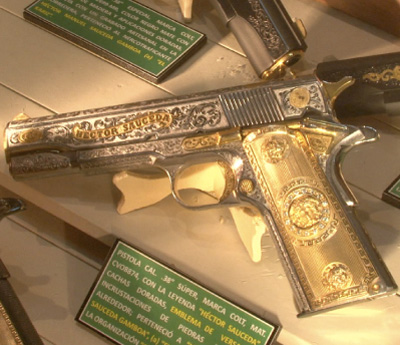
When a gram of coke is purchased in North America, much of the profit ends up blood-stained in the back pocket of a Mexican druglord (or more precisely, in one of his crates of greenbacks in a warehouse somewhere). And what will the druglord spend it on? Weapons and gold, mostly.
On the seventh floor of army headquarters in Mexico City, some of the kingpins’ personal treasures are on show in a curious little bazaar of narco items called the Museo de Enervantes (Narcotics Museum). It’s not open to the public — it’s designed to complement the training of troops in the war on drugs, to help them get to know the enemy better — but PLANET managed to sneak inside and take a peek.
On show is bounty captured from gangster safe houses, or culled from their cold, dead bodies. The permanent collection is truly astounding to behold: like a Gulf cartel boss’ cache of gold-plated, diamond-encrusted Colt pistols, elaborately engraved with initials, signatures, and pre-Colombian motifs. One has a Versace logo, though I doubt Gianni knew much about it. There’s even a solid silver AK-47, which is completely useless as a weapon — it starts to melt after three or four rounds are fired.
The army says all the guns were custom decorated in the US and smuggled into Mexico along with all the other artillery imported by the cartels (samples of which are also on show in the museum: anti-tank 50-caliber Barrett guns, grenade launchers, bazookas). It’s the old adage: while the drugs flow north, the weapons and cash flow south.

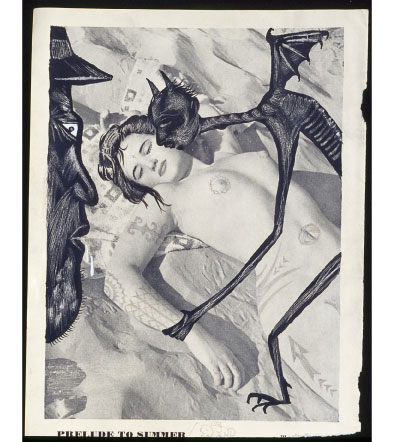
I first became friends with Dr. Lakra a few years ago when I went to his studio in Oaxaca to get a tattoo. Stepping inside, it was like walking into a baby devil’s playpen: there were toys and dolls and weird shit everywhere, stuff he used in his art. Books, paintings, postcards and stickers covered the walls. We cleared a space on the floor so he could get to work on my flesh.
Once finished, when he refused payment, I gave him a couple of poster-size photos of mine instead for him to intervene on, knowing that was one of his preferred mediums. He’d spent years tattooing skin, why not tattoo paper? At first, he just did it for fun, but soon the scrapbook turned into a unique body of work which I wrote about for PLANET several years ago. Now, RM Editorial has published a book of one of his collections of magazine interventions, titled Health and Efficiency.
With an all-black velvet cover and beautifully printed inside, Health and Efficiency is a sexy little book. The pieces are all derived from a pile of old nudist camp magazines he picked up in Brick Lane market in East London. In the original clippings nubile porcelain-white maidens pose puritanically next to ponds and lillies. But in Lakra’s versions they have sailor tattoos and get skewered by monochrome skeletons and mugwumps. On the surface, the tattoo-scratched images appear gaudy and comical, like doodles in a textbook. But if you engage them, the shapes and figures he inserts have a mythical underworld quality.

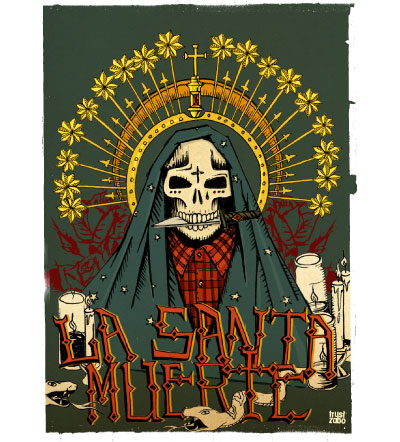
Five hundred years ago, Mexico City, then known as Tenochtitlán, was an island citadel of white limestone plazas, temples, and causeways that crowned the vast Lake Texcoco. With a population of around 300,000, it was one of the grandest cities on earth. When Spanish soldiers first set their eyes on the Aztec capital, they wondered if they were not dreaming.
The city’s ceremonial heart lay where the historic old town is today, where the last remnants of the great white city can be seen: just a few hundred square feet of ruins next to the Cathedral, itself built using the stones of dismantled pyramids. Somewhere near here, there stood a temple dedicated to Mictecacihuatl, the Queen of the Underworld, Goddess of Death. Forced underground by the Inquisition and out of sight for centuries, Mictecacihuatl, now transfigured, is on the rise once again, in almost exactly the same place where she was once revered by the Aztecs….


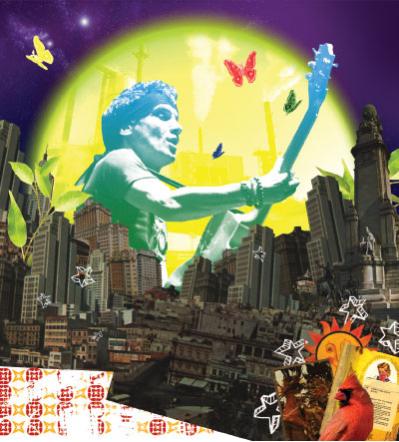
Over the years, there have been countless random sightings of Manu Chao around the world. Someone saw him playing football in a village in El Salvador, or riding a bike in Serbia, or buying fruit at a market in Mexico City. Many claim to have seen him strolling the streets of the Barrio Gótico in Barcelona, where he allegedly has a small apartment. It seems that Manu, one of the biggest-selling artists in the history of European music, both highly recognizable and a complete chameleon, might appear anywhere, at any time. For Manu Chao, it’s all the same. One World.
During this last summer, there were confirmed sightings in North America, where his official schedule took him on a month-and-a-half-long tour with his band, Radio Bemba. And there he was, backstage at the Prospect Park bandshell in Brooklyn. On a balmy afternoon just hours before the evening’s show, Manu’s short, compact frame saunters casually around, barefooted, topless, in calf-length shorts and a flatcap. His arms dangled freely at his sides, moving to the rhythm of his loose body. It’s with a rascal’s glee and impatience that he begs the engineers to crank up the volume during the soundcheck. “More, more, more,” he mouths, pumping his arm, finger pointing up to the sky. Indeed, talking to him, a childlike energy comes across: a curiosity, a wonder.





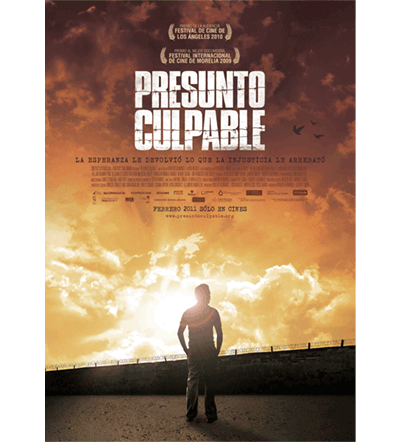
 Facebook
Facebook Permalink
Permalink Digg
Digg Reddit
Reddit LinkedIn
LinkedIn StumbleUpon
StumbleUpon Tumblr
Tumblr